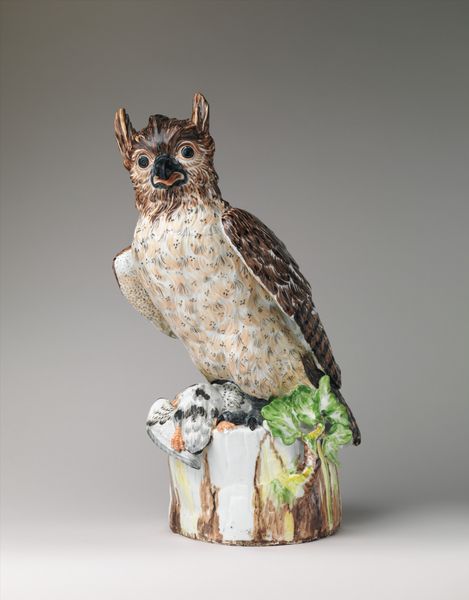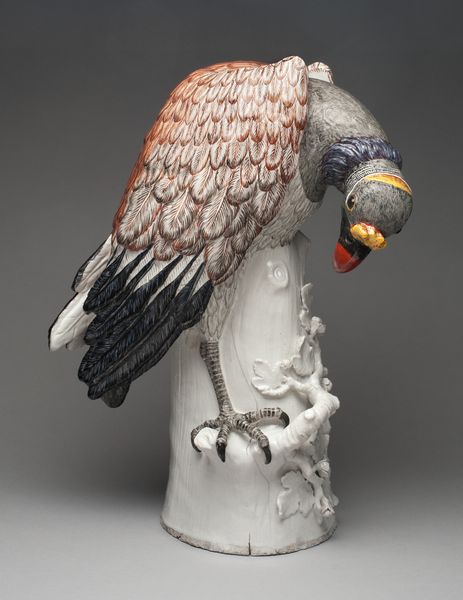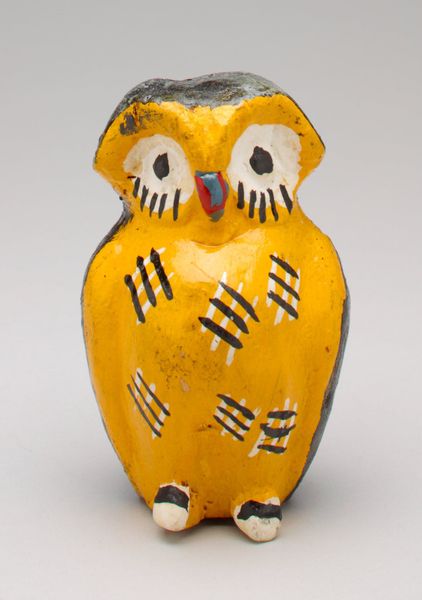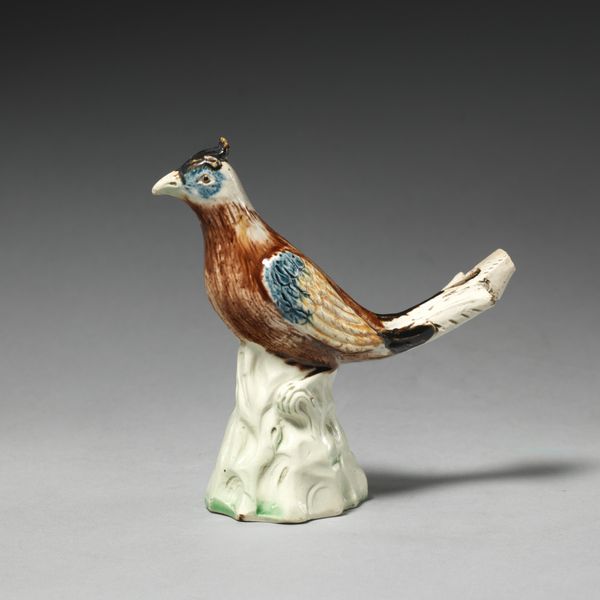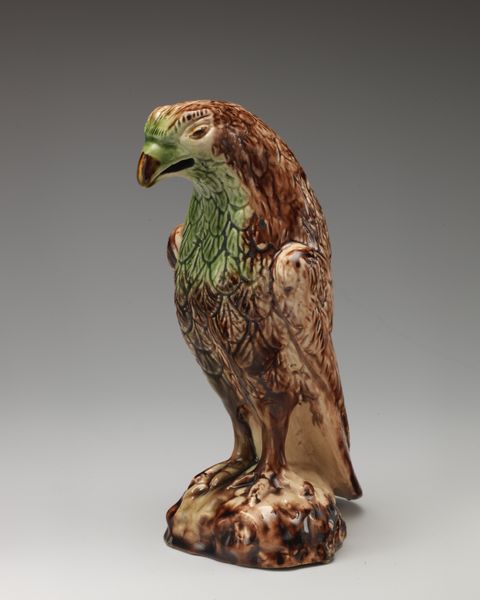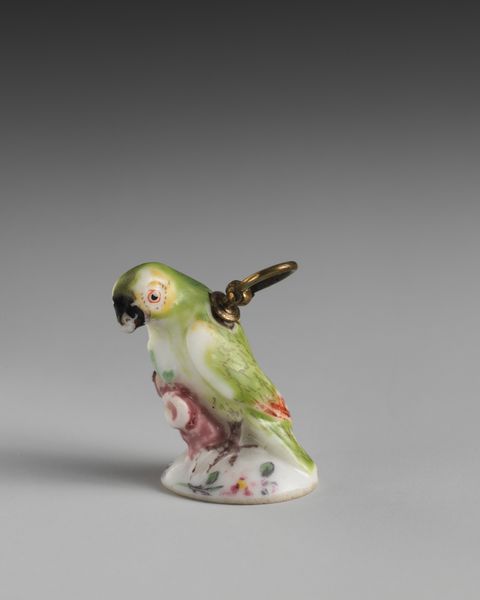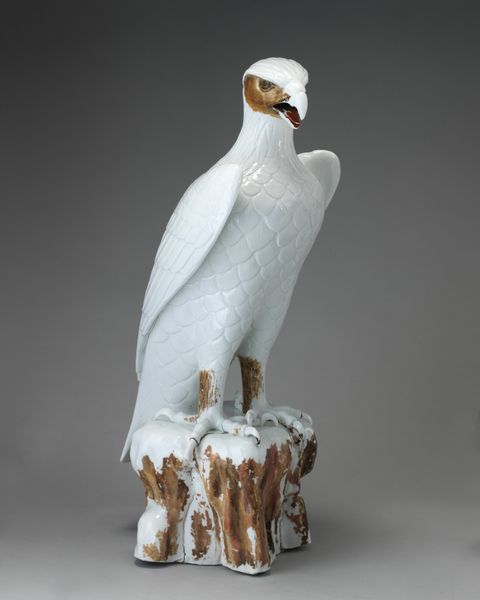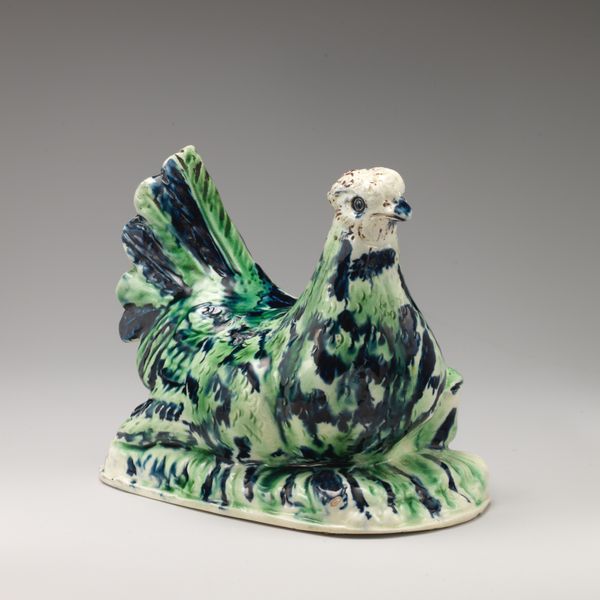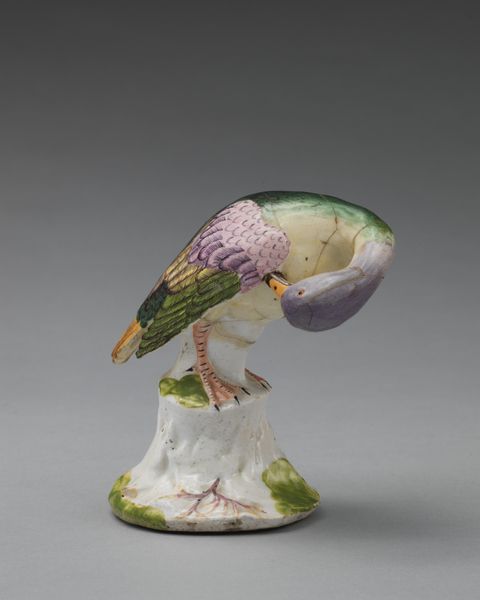
ceramic, porcelain, sculpture
#
ceramic
#
porcelain
#
figuration
#
sculpture
#
decorative-art
Dimensions: 20.8 × 8.3 × 13.3 cm (8 1/6 × 3 1/4 × 5 1/4 in.)
Copyright: Public Domain
Curator: Here we have an “Owl” created around 1760 by the Bow Porcelain Factory. It resides here at The Art Institute of Chicago. It's a rather lovely, relatively small, porcelain sculpture. Editor: Yes, and immediately striking are the almost whimsical, slightly surreal colors. I see lavender and peach hues, which create an unusual, dreamlike effect against the bird's sharp talons. Curator: The Bow Factory, located just outside London, was quite innovative in its use of porcelain. It aimed to compete with imported porcelain, particularly from Meissen and China, catering to the rising consumer culture of the British elite. Objects like this "Owl" were part of that strategy, signaling both wealth and refined taste. Editor: Focusing on the craftsmanship, the texture created by the overlapping feather patterns is really quite compelling. I also noticed the highly contrasted, stylized flowers nestled between the owl's feet and the rocky base, almost too precious. It almost seems like an artificial nest or an uncanny garden stage setting. Curator: This artificiality, I think, is key to understanding its role. Owls, typically symbols of wisdom or even ill omen, are domesticated, transformed into delightful, purely decorative objects that fit seamlessly into the fashionable interior. This piece would have been a conversation starter, embodying a new appreciation for naturalism—albeit, of the manufactured variety. Editor: True. The stark black eyes contribute to a captivating expression, don’t they? And given its original display context, probably lit by candlelight, it must have had a considerable impact through shadow play. Its almost unsettling but it is certainly designed to provoke contemplation. Curator: And, let’s not forget, such ownership extended its maker's—and the buyer's—cultural capital, differentiating themselves from other members of an aspirational merchant class eager for luxury commodities. Editor: In conclusion, it is rather extraordinary how this sculpture successfully embodies beauty and the unsettling gaze of a creature simultaneously tamed and venerated through artifice. Curator: A piece designed to appeal to eighteenth-century eyes, this owl exemplifies art's transformative function in reflecting and shaping consumer culture and the values associated with it.
Comments
No comments
Be the first to comment and join the conversation on the ultimate creative platform.
